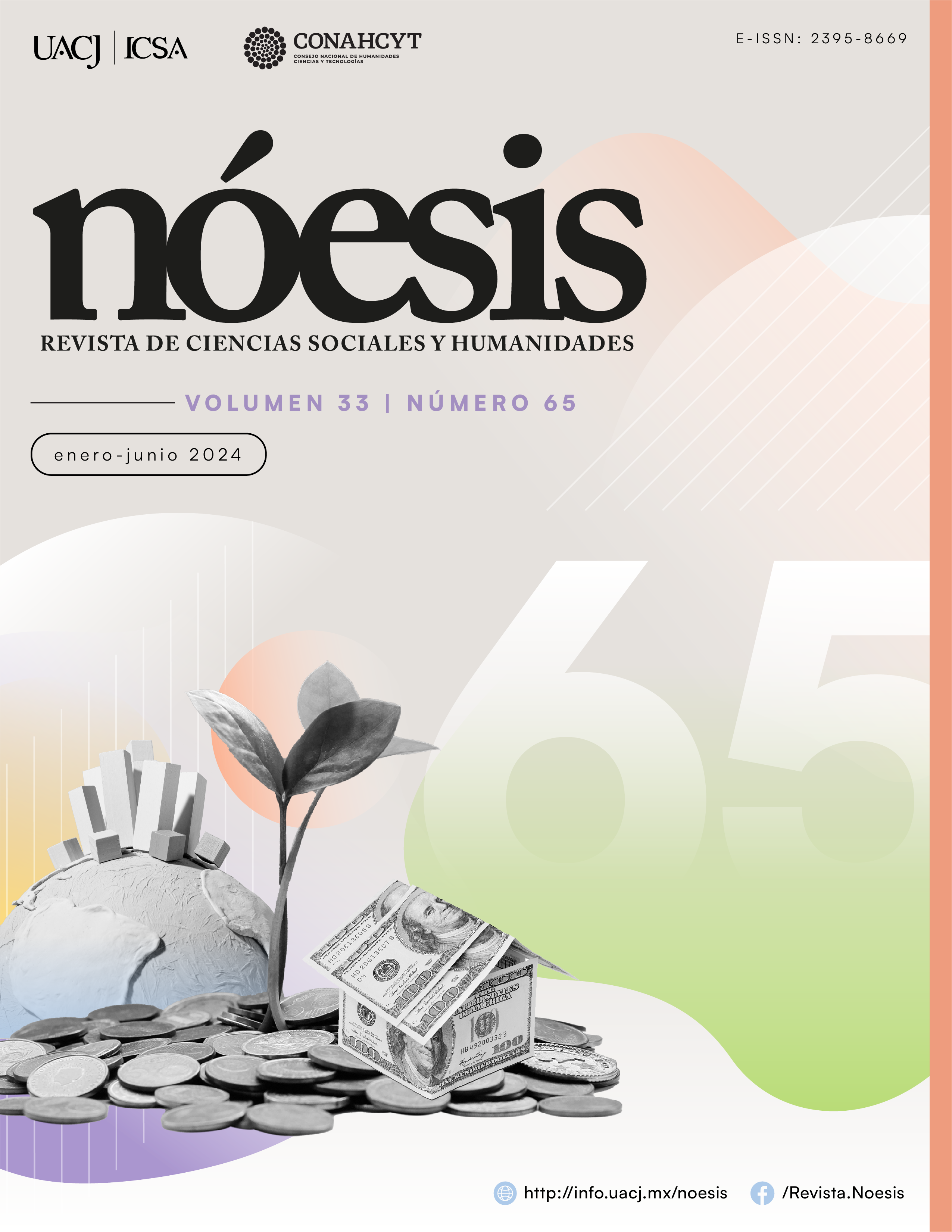Measuring socioeconomic impacts in environmental studies: A methodological approach
Main Article Content
Abstract
The assessment (ex – ante) of the physical and biological impacts in an Environmental Impact Assessment (EIA) has a methodology reviewed and supported by the majority of the scientific community, such as Environmental Quality Standards (ECA) or Maximum Permissible Limits (MPL). However, what are the parameters to assessment socioeconomic impacts in an EIA? And what indicator to use to measure these impacts? These questions are intended to be answered in this work through a methodological approach, taking current economic theory as support and constructing a set of intensity indicators and their respective parameters. It is expected that this proposal can be a reference for evaluators, consultants and that it be continually reviewed by the scientific community, and that in this way the EIAs are better prepared and can be suitable for making environmental decisions.
Downloads
Article Details

This work is licensed under a Creative Commons Attribution-NonCommercial-ShareAlike 4.0 International License.
References
Acquatella, J., Altomonte, H., Arroyo, A., Lardé, J. (2013, 1 junio). Rentas de recursos naturales no renovables en América Latina y el Caribe: evolución y participación estatal, 1990-2010. https://repositorio.cepal.org/handle/11362/7044
Ahmadov, A. K., & Van Der Borg, C. (2019). Do natural resources impede renewable energy production in the EU? A mixed-methods analysis. Energy Policy, 126, 361-369. https://doi.org/10.1016/j.enpol.2018.11.044
Brosio, G., Jiménez, J., Ruelas, I. (2018, 17 diciembre). Desigualdades territoriales, transferencias de igualación y reparto asimétrico de recursos naturales no renovables en América Latina. https://repositorio.cepal.org/handle/11362/44303
Conesa Fernández-Vítora, V. (1997). Guía metodológica para la evaluación del impacto ambiental. MundiPrensa.
Coria, I. D. (2008). El estudio de impacto ambiental: características y metodologías. Invenio, 11(20), 125–135. https://www.redalyc.org/articulo.oa?id=87702010
Dale, V. H., Efroymson, R. A., Kline, K. L., Langholtz, M. H., Leiby, P. N., Oladosu, G. A., Davis, M. R., Downing, M. E., & Hilliard, M. R. (2013). Indicators for assessing socioeconomic sustainability of bioenergy systems: A short list of practical measures. Ecological Indicators, 26, 87–102. https://doi.org/10.1016/j.ecolind.2012.10.014
ELAW (2010). Guía para evaluar EIAs de Proyectos Mineros. Alianza Mundial de Derecho Ambiental.
Carlos, O. E. J. (2015). La Evaluacion del Impacto Ambiental En Mexico. Publicia.
Gutiérrez Andrade, O., (2006). Aplicación de instrumentos económicos e intervención estatal en el problema de las externalidades. Perspectivas, 9(18), 101-126.
Hanley, N., Shogren, J., & White, B. (2019). Introduction to environmental economics. Oxford University Press.
Haro Martínez, A. A., y Taddei Bringas, C. (2010). Valoración ambiental: aportaciones, alcances y limitaciones. Problemas del Desarrollo. Revista Latinoamericana de Economía, 41(160), 209-221. http://www.scielo.org.mx/scielo.php?script=sci_arttext&pid=S0301-70362010000100010&lng=es&tlng=es.
Henri, P. A. O. (2019). Natural resources curse: A reality in Africa. Resources Policy, 63(101406), 101406. https://doi.org/10.1016/j.resourpol.2019.101406
Hilmawan, R., & Clark, J. (2019). An investigation of the resource curse in Indonesia. Resources Policy, 64(101483), 101483. https://doi.org/10.1016/j.resourpol.2019.101483
Hoover, E. M., & Giarratani, F. (2020). Introduction to regional economics (4a ed.). McGraw-Hill.
INEGI (2018). Sistema de Cuentas Nacionales de México 2013. SNIEG. Información de Interés Nacional. Recuperado el 11 de diciembre de 2023, de https://www.inegi.org.mx/contenidos/programas/ee/2013/doc/met_ceem.pdf
Ken, C. y Barradas, K. (2021). Recursos Naturales, Desarrollo Regional y Economía. Ediciones La Biblioteca, S.A. de C.V. México. Recuperado el 11 de diciembre de 2023, de http://risisbi.uqroo.mx/bitstream/handle/20.500.12249/2912/Recursos%20Naturales%2C%20Desarrollo%20Regional%20y%20Econom%C3%ADa%201.pdf?sequence=1&isAllowed=y
Lewis, L., & Tietenberg, T. H. (2019). Environmental economics and policy. Routledge.
Mancini, L., & Sala, S. (2018). Social impact assessment in the mining sector: Review and comparison of indicators frameworks. Resources Policy, 57, 98-111. https://doi.org/10.1016/j.resourpol.2018.02.002
Moritz, T., Ejdemo, T., Söderholm, P., & Wårell, L. (2017). The Local Employment Impacts of Mining: An econometric analysis of job multipliers in Northern Sweden. Mineral economics, 30(1), 53-65. https://doi.org/10.1007/s13563-017-0103-1
Muinelo Gallo, L. (2022). Asignación, distribución y uso de los ingresos fiscales derivados de la explotación minera en Chile: un análisis de sus efectos económicos y sociales. Comisión Económica para América Latina y el Caribe (CEPAL). https://repositorio.cepal.org/server/api/core/bitstreams/663081e9-5e8d-4e33-93d7-0b48275dcd81/content
Nordhaus, W. D. (2007). A review of the Stern Review on the economics of climate change. Journal of Economic Literature, 45(3), 686–702. https://doi.org/10.1257/jel.45.3.686
Plazas Certuche, J. A., de J. Lema Tapias, Á., & León Peláez, J. D. (2009). Una propuesta estadística para la evaluación del impacto ambiental de proyectos de desarrollo. Revista Facultad Nacional De Agronomia Medellin, 62(1), 4937–4955. http://www.scielo.org.co/scielo.php?script=sci_arttext&pid=S0304-28472009000100019&lng=en&tlng=es.
Rogers, P. (2014). La teoría del cambio. Unicef-irc.org. Recuperado el 02 de marzo de 2023, de https://www.unicef-irc.org/publications/pdf/Brief%202%20Theory%20of%20Change_ES.pdf
Sánchez Alcalde, L. A. (2018). Transferencias gubernamentales en el Perú. El caso de la región minera Ancash en un contexto de cambios (2003-2015). Economía y Sociedad, 38, 87–110. Recuperado el 02 de marzo de 2023, de http://www.economiaysociedad.umich.mx/ojs3/index.php/ecosoc/article/view/18
Schroeder, R. A. (2008). Environmental justice and the market: the politics of sharing wildlife revenues in Tanzania. Society and Natural Resources, 21(7), 583-596.
Unesco. (2013). Informe de Seguimiento de la Educación para Todos. Recuperado el 09 de mayo de 2023, de https://es.unesco.org/gem-report/node/361
Wise H. & Shtylla, S. (2007). The Role of the Extractive Sector in Expanding Economic Opportunity. Economics Opportunity Series. The Fellows of Harvard College.

